Feijoa plant (Acca sellowiana), also called akka feijoa, or akka sellova, is represented by not very tall trees and evergreen shrubs, it is a species of the genus Akka of the Myrtle family. Some experts distinguish feijoa into a separate genus. This species was named after the Portuguese naturalist João da Silva Feijo, it was he who found this plant in Brazil at the end of the 19th century. The specific epithet was given to this plant in honor of the German naturalist Friedrich Sellow, who studied the Brazilian flora. In natural conditions, feijoa can be found in Colombia, Brazil, Uruguay and northern Argentina. Feijoa in nature is found only in the subtropics, while in the tropics they grow extremely poorly. On the territory of Europe, such a plant appeared only in 1980.Today, this plant is cultivated not only in South America, but also in Crimea, Abkhazia, Georgia, Armenia, Azerbaijan, Dagestan, Krasnodar Territory of the Russian Federation, Australia, New Zealand, Italy, France, Greece, Portugal, Spain and the US Pacific coast and the Caucasus.
Content
Brief description of cultivation
- Bloom... In spring or summer, while its duration is about 20 days.
- Landing... The seeds are planted in a container in the last days of winter or in the first weeks of spring.
- Illumination... The light should be bright, but diffused.
- Temperature regime... Normal room temperature.
- Watering... Watering should be bottom (through the pan) and systematic.
- Air humidity... The humidity level should be higher than normal room humidity. In winter, during the heating period, the bushes need to be moistened with a spray bottle every day in the evening with lukewarm water.
- Fertilizer... You need to feed it systematically 1 time in half a month with organic matter (solution of bird droppings (1:15) or mullein (1:10)). And mineral fertilizers can be used for this only if absolutely necessary.
- Dormant period... When grown indoors, this period is not pronounced.
- Transfer... Before the bushes are 3 years old, they need to be transplanted once a year. Adult specimens should be transplanted much less often, or rather, once every 5 years, however, the top layer of the soil mixture in the container must be replaced every year.
- Pruning... In late autumn or at the beginning of spring, after the height of the bushes is 25 to 30 centimeters, they will need to be shortened by 1/3 part. Pruning for crown shaping and sanitary pruning should be done at the same time as needed.
- Reproduction... Cutting and seed method.
- Harmful insects... False shields and red spider mites.
- Diseases... Gray rot.
- Properties... The composition of the fruits of such a plant includes substances that are very useful for the human body.
Features of feijoa
Feijoa is a spreading and very large shrub or tree, the height of which is about four meters. Densely branched but compact root system is superficial. The surface of the trunk is covered with a brownish-green rough bark. Criss-cross opposite short-petiolate leaf plates have a pinnate venation and an oval shape, they are entire-edged, and leathery to the touch, often drooping. The front surface of the leaves is smooth dark green, and the back is pubescent and grayish-green. Axillary four-membered bisexual flowers are paired, single, and sometimes form a small corymbose inflorescence. They have a large number of stamens - 50–80 pieces, white petals, as they approach the base, change their color to pink. The flowering period is approximately 20 days. For pollination, such a plant needs insects. The fruit is a fleshy juicy berry of a dark green color, its shape can be wide-angle, cuboid or oval-elongated. In diameter, fruits can reach 15-50 mm, and their length varies from 20 to 70 mm. The seeds are located inside the berries, while they are surrounded by a translucent pulp. The smell and taste of such a berry at the same time is similar to pineapple, kiwi and strawberries. Their peel has a bumpy surface, and its color varies from dark green to greenish-yellow. In some cases, the rind has a purple-purple bloom of anthocyanin.
Growing feijoa at home
Landing
Today, flower growers are increasingly trying to decorate their home with exotic plants, which include feijoa. If you wish, you can try to grow it from the bone with your own hands. After you acquire a ripe feijoa, the peel of which should have a pale yellow color, it must be placed in a place where it is always warm for ripening. After the berry becomes very soft, cut it open and remove the seeds along with the pulp. Take a thick cloth and spread the pulp on it, and then rinse off the mucus under running water. Dry the fabric along with the seeds, and then sow them in pots with drainage holes, at the bottom of which there is a layer of sand or expanded clay, and they should be filled with a soil mixture, which includes river sand and turf soil (1: 1). In order to facilitate sowing seeds, experienced flower growers recommend combining them with a small amount of sand. When sowing is finished, the seeds should be lightly pressed into the soil mixture, without sprinkling them on top. Then the crops are moistened from a sprayer using a pinkish solution of potassium permanganate. After that, the container must be covered with glass (film) on top and transferred to a place where it is warm and good lighting. Until the seedlings appear, the substrate in the container must be moistened from the sprayer as it dries up, while all condensate must be removed from the shelter.
Illumination
Most often, the first shoots appear after 4 weeks or a little earlier. As soon as the plants appear, it is necessary to pull out all the weakened ones without tightening. For seedlings to grow well, they need a lot of bright light, but it must be necessarily diffused. In this regard, it is best to sow such a crop in the last winter or first spring weeks.If the sowing is carried out in the autumn or in the first half of the winter period, then the crops will need additional lighting, since at this time the daylight hours are too short. Install a phytolamp or any other lamp at a height of 25 centimeters above the container. But remember that plants need reliable protection from direct sunlight.
Picking
During the formation of 2 to 4 pairs of true leaf plates at seedlings, they will need to pick at individual small pots. To do this, use a soil mixture, which includes leaf humus, rotted manure, sod land and coarse river sand (2: 0.5: 3: 0.5). Such transplantation helps to accelerate the development of the plant root system. At first, seedlings are characterized by rapid growth, but for the first time such bushes will be able to bear fruit only for 5 or 6 years of growth.
Watering
Such a plant is distinguished by its moisture-loving nature. If the clod of earth in the pot dries up, then because of this, the feijoa can throw off the foliage, then the death of the root system and branches begins. In this regard, watering should be carried out systematically through the pallet. It is not necessary to pour out excess liquid from the pan, since after a while it will be able to be absorbed into the soil mixture. In the cold season, when the air is dry by heating devices, the bush must be regularly moistened with a spray bottle with slightly warm water, this is done every day in the evening.
Top dressing
During active growth, the bush needs systematic feeding. In this regard, feijoa is fed throughout the year 1 time in half a month. At the same time, experts recommend using organic fertilizers, not mineral complex fertilizers. This culture most of all prefers a solution of poultry manure (1:15) or mullein (1:10). Of the minerals, you can use a superphosphate solution (1 tsp per liter of water), it must be boiled, and after the mixture becomes cold, it is diluted with water (1: 2). Of all the fertilizers containing potassium, feijoa responds best to ash extraction: take 1 large spoonful of ash from burnt deciduous trees or grass per liter of water, leave the mixture for 7 days to infuse. Use potash, phosphate, and nitrogen alternately. Fertilizer should be applied to the substrate only after watering.
Transfer
Such a fast-growing plant, before it turns 3 years old, must be transplanted once a year. In this case, a soil mixture is used, which includes sand, peat, humus, sod and leafy soil (1: 1: 1: 1: 1). An older bush is transplanted into a new container at least 1 time in a couple of years. Old bushes need replanting only once every 5 years. When replanting a bush, you can leave the old soil mixture on the root system, but only if it does not contain pathogenic microorganisms and harmful insects, or if it has not sour. Feijoa should be transplanted by the transshipment method, while being very careful, since its root system is very fragile.
Pruning
When grown indoors, the height of the bush can reach about 6 m or even higher, so it must be cut off. If you cut the tree correctly, then this will not be able to negatively affect its fruiting, but it will add effect to its crown. Pruning is carried out in early spring or late autumn. To do this, use a very sharp secateurs or a knife, which should be disinfected in advance with medical alcohol or for 30 minutes. boil it in plain water. After the height of the bush is from 25 to 30 centimeters, it is shortened by 1/3 part. Formative as well as sanitary pruning is carried out only when necessary. To begin with, you need to cut off all growths that depart from the trunk at an angle of less than 60–70⁰, and also cut out all competing branches and stems. Injured, weakened, dried out and damaged branches by disease or pests must also be removed.
In order to give the plant the shape of a tree, all branches and shoots must be constantly removed from the bottom ¼ of the trunk. The fact is that a rich harvest will not grow on them, but thanks to such pruning, the bush will become a beautiful tree. Further pruning consists only in the systematic removal of root growth. When pruning branches, experts advise placing the blade at the pruner at an angle of 45 degrees, while all the cuts must be made in the direction from the trunk, and only very short stumps should remain, they will soon dry out. After cutting, the cut sites must be treated with a solution of a fungicidal preparation.
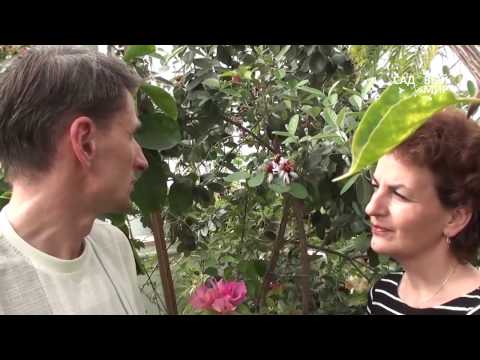

Watch this video on YouTube
Feijoa pests and diseases
Diseases
Feijoa is distinguished by a fairly high resistance to diseases. If such a plant is provided with good care and suitable conditions, then it may never get sick at all. If you water it incorrectly or take care of it poorly, then this increases the likelihood that the bush will be affected by gray rot. Leaf spot affects such a tree extremely rarely.
If feijoa is affected by a fungal disease, it should be treated with a Bordeaux mixture. If gray rot appears on the bush, then the affected areas are carefully cut out, while always capturing healthy tissue, then the plant is well sprayed with a solution of a fungicidal preparation. But it should be borne in mind that if you do not start watering the bush correctly, then gray rot will reappear.
Harmful insects
False shields and red spider mites can harm such a tree. As a rule, ticks most often injure young shoots and foliage. To destroy them, use Keltan's solution (2 grams per liter of water). It is recommended to spray the plant in the evening, since if the sun's rays hit wet foliage, then burns can form on it. After treatment, the agent retains its activity for about 40 days; therefore, repeated processing is not necessary. In order to prevent the bush, you should systematically arrange a shower, the fact is that ticks do not start in a humid environment.
False shields prefer to settle along the median vein on the front surface of the leaf plates. The Karbofos solution is highly effective in the fight against such a pest (for 1 liter of water from 5 to 6 grams). The resulting solution is carefully sprayed on the foliage on both sides. To get rid of such a pest, one treatment will not be enough, for this they will need 2 or 3, while the break between procedures should be 5-7 days.
Breeding feijoa
For reproduction of feijoa, the method of grafting is used, as well as generative (seed). For harvesting cuttings, half-ripe shoots with 3 internodes are used. The cut sites should be treated with a root-forming agent. Their planting for rooting is carried out in a light soil mixture, for this, vermiculite, well-washed river sand, coconut soil, perlite or flower soil mixture are suitable, while it is combined with vermiculite or perlite (1: 1). From above, each stalk is covered with a glass jar or a cut off plastic bottle, while the container with them must be transferred to a warm place (from 23 to 25 degrees). The rooting process can last more than one month, while there is a high probability that some of the cuttings will not have roots.


Watch this video on YouTube
Types and varieties of feijoa
In the middle latitudes, the feijoa varieties of foreign or Crimean selection are popular among flower growers. For instance:
- Superba... This plant has very large, fragrant and almost round fruits.
- Coolidge... In such a cultivar, created by foreign breeders, the fruits have an oval-elongated shape.
- Light... This variety is one of the most popular.The shape of the fruits is oval-elongated or oval-rounded, they are covered with a bumpy skin of a dark green color with a blush. As the berries ripen, the peel becomes lighter. The pulp of such fruits is very tasty and somewhat resembles strawberries.
- Nikitskaya... Outwardly, such a plant looks like the Light feijoa variety. The taste of the fruit pulp is sweet-sour refreshing.
- Lumpy... There are few seeds inside the rounded, lumpy berries.
- Early aromatic... The berries are covered with a smooth peel, their flesh is fragrant and tender, with a sweet-sour taste. There are a lot of seeds inside them.
- Firstborn 120... This medium-late variety has not very large berries of various shapes, which are covered with a greenish-yellow peel. There are a lot of seeds inside the berries.
Also popular among flower growers are such varieties as: feijoa Nikitskaya 42, Nikitskaya 3, Crimean early, Yaltinskaya, Andre and Choiseash.
Feijoa properties: harm and benefit
Useful properties of feijoa
Feijoa berries are delicious and incredibly healthy for the human body. They include iodine, zinc, manganese, copper, iron, phosphorus, magnesium, potassium, calcium, sodium, malic and folic acids, essential oils with strawberry and pineapple aroma, vitamins C, PP, B1, B2, B3, B5, B6, as well as easily digestible fats and proteins. Such berries contain a lot of iodine, even more than seafood. The largest amount of such an element is found in those fruits that have grown on trees located near the sea: in 100 grams of such berries there is 35 mg of iodine, while the daily norm for an adult is only 0.15 mg.
Experts advise including feijoa in your diet for vitamin deficiency, atherosclerosis, colds, sluggish intestinal motility, diseases of the digestive system, gout, Graves' disease, constipation and pyelonephritis. Such fruits increase hemoglobin and lower blood cholesterol levels, as well as improve memory and blood composition.
These berries are also used externally, for example, they make face masks that nourish and rejuvenate the skin, as well as soothe sore areas. The third part of the berry must be chopped well and combined with 2 large tablespoons of cottage cheese, egg yolk and 1 large spoonful of olive oil. The resulting mixture is evenly applied to the surface of the neck and face, after a third of an hour it is washed off.
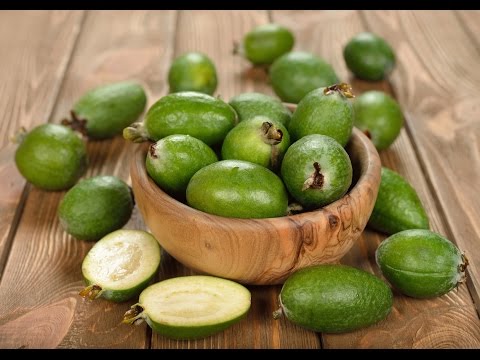

Watch this video on YouTube
Contraindications
People with overweight problems, as well as diabetics, are not allowed to eat feijoa because it contains a lot of sugar. Still, such fruits cannot be eaten with individual intolerance to the product. With great care, they should be eaten by those people who have an overactive thyroid gland.
Even if you have no contraindications, you should not eat a lot of feijoa at a time, as this can cause heart palpitations, temperature changes, anxiety, and in some cases a nervous breakdown. However, in some people, overeating of such a product leads to a depression and to a significant decrease in performance.
It is better not to eat cow's milk and this berry together. Children should not eat too much feijoa. Berries that have been stored for more than 7 days should not be eaten.

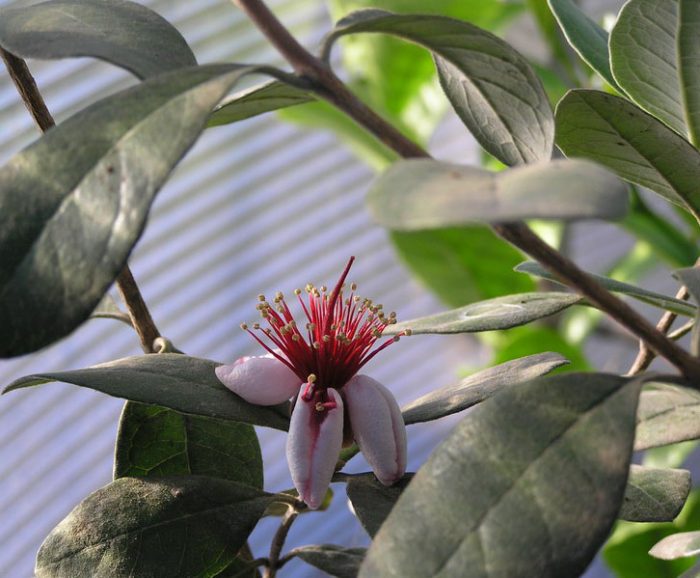
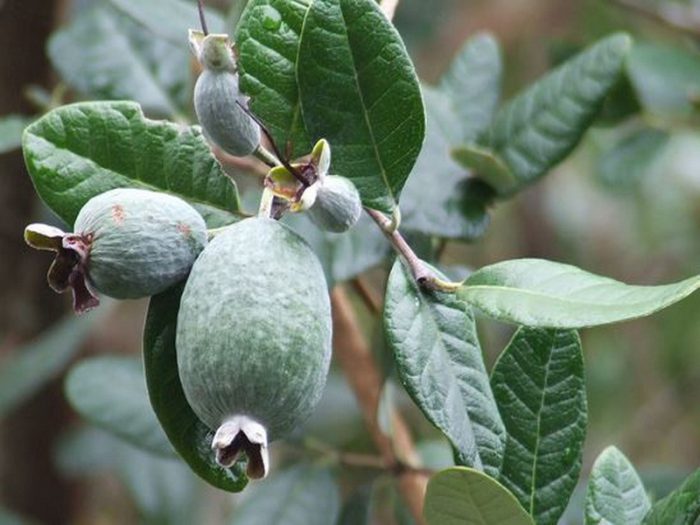
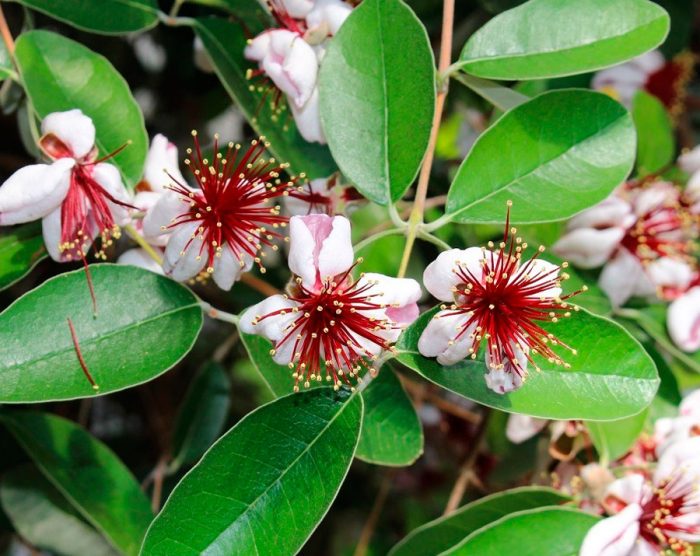
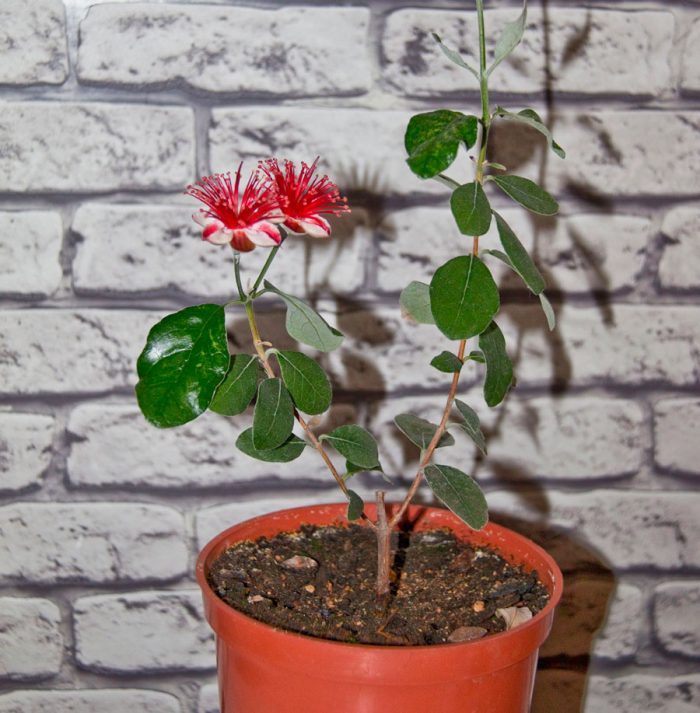


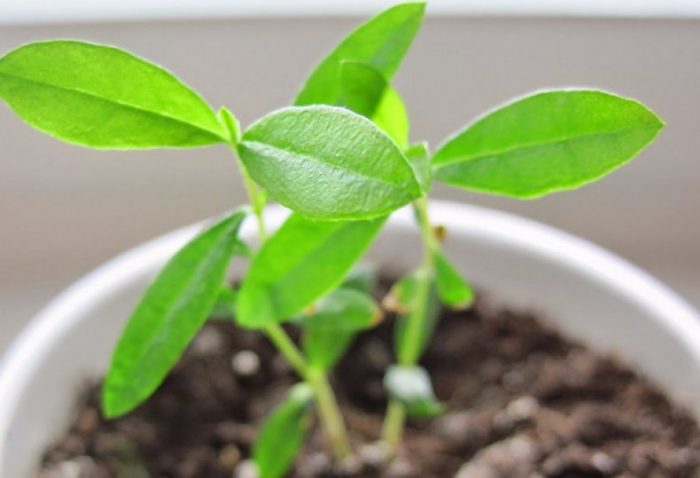
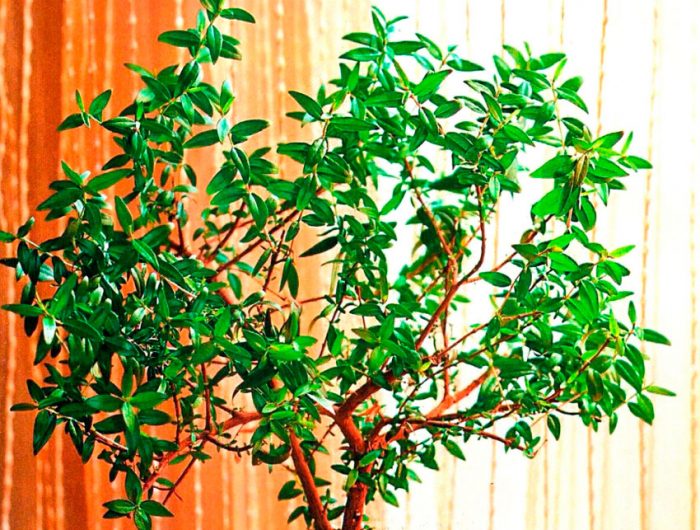
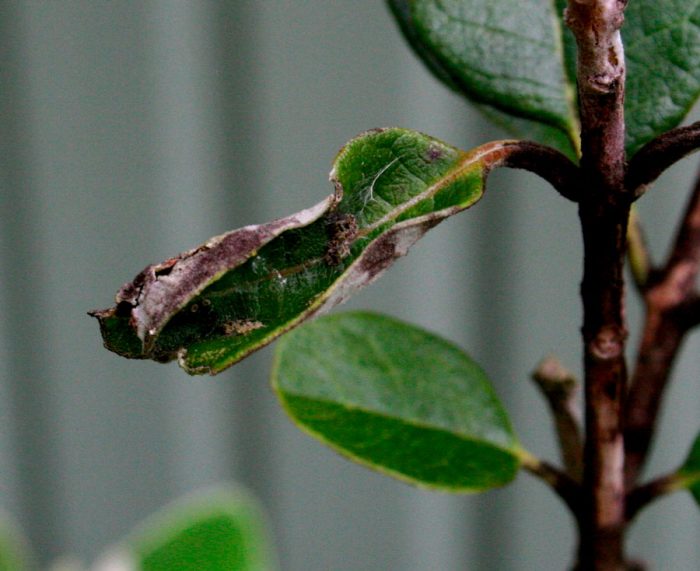
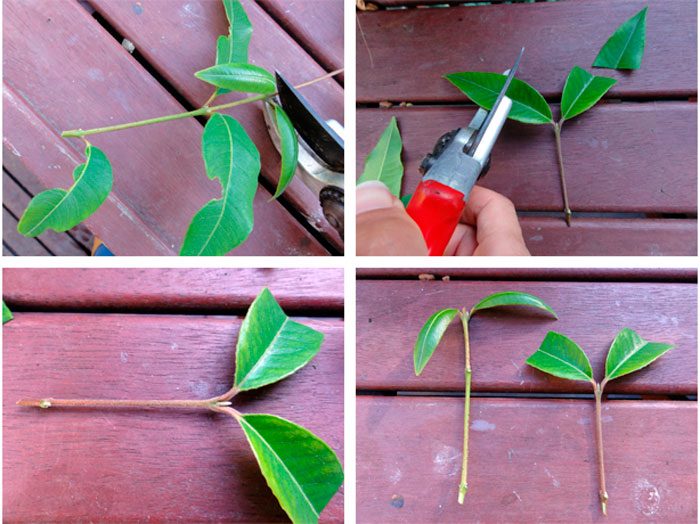
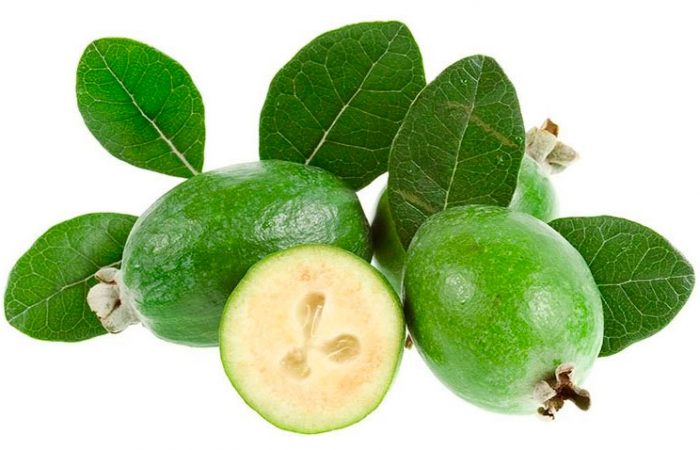
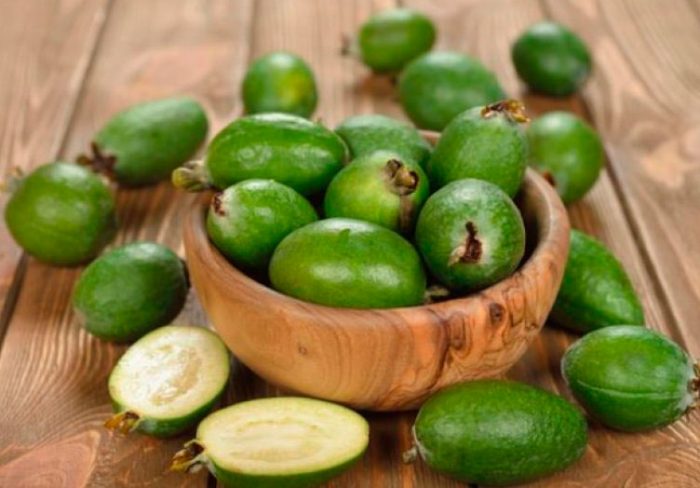
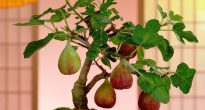

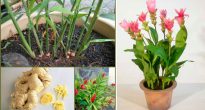







Grown from bones on the balcony avacado, mango, pomegranate, feijoa, kumquat, kiwi. I planted two pomegranate plants in a country house in the garden. So I think they need to be sheltered for the winter. In Belarus, there are frosts down to -26, this is rare, but it happens.
And I can't do mango.
Most likely because you had the wrong seedling.Look at the agronov website. They sell very good seedlings, everyone takes root. For a home garden - great!